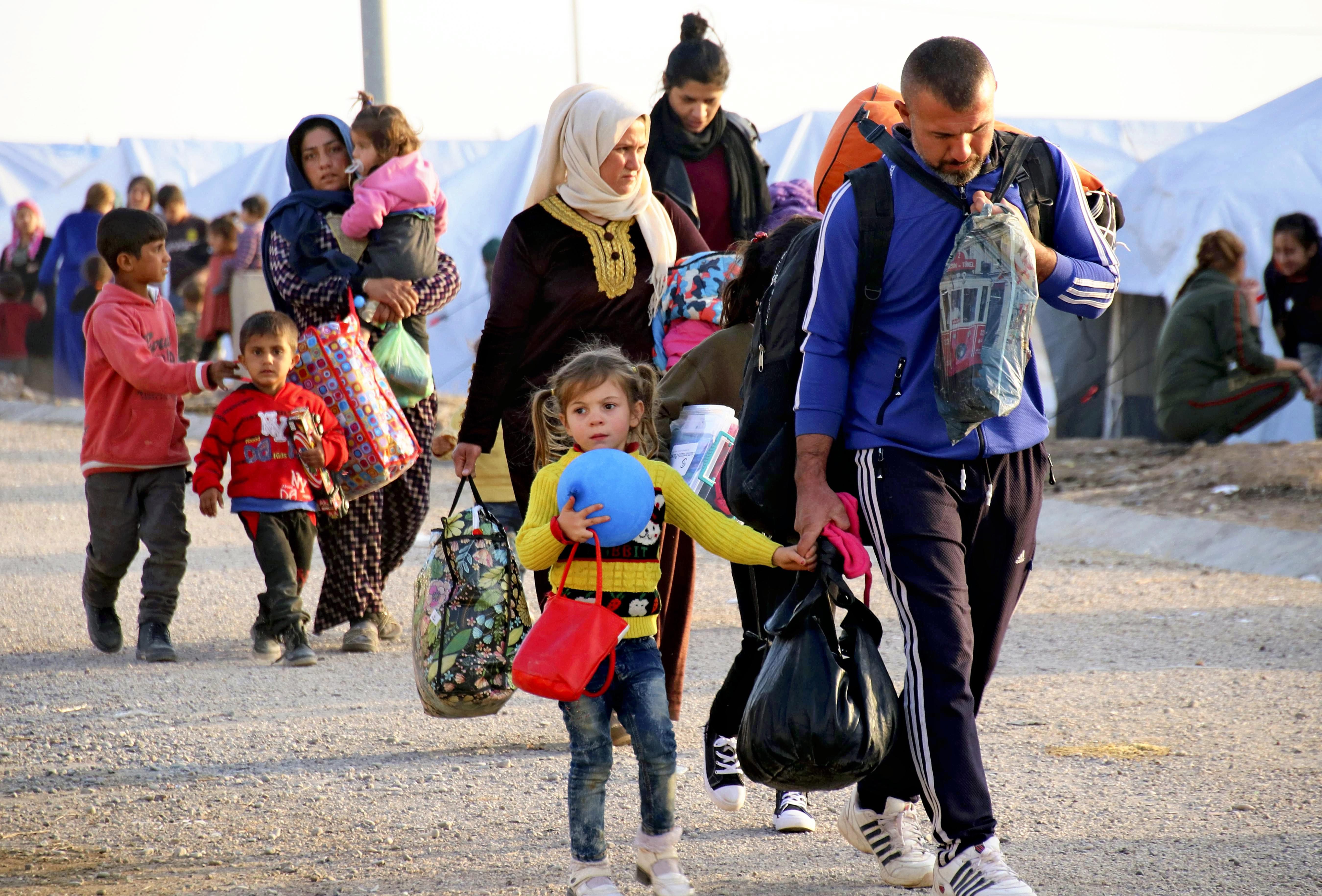December 06, 2019
It's been two months since President Trump abruptly ordered the withdrawal of US troops from northern Syria, paving the way for a bloody Turkish offensive in that region. (See our earlier coverage here.) What's happened since? A guide for the puzzled:
No "end date" for US troops in Syria – US Secretary of Defense Mark Esper said this week that the United States has completed its military pullback in northeastern Syria. Back in October, President Trump pledged to withdraw the roughly 1,000 American troops deployed there. Since then, some American troops have left Syria altogether, while others were redeployed to defend nearby oil fields from ISIS, as well as from Syrian government troops and Russia. Now, there are roughly 600 American troops dispersed around Syria, and the remainder have been deployed in Iraq to stave off a potential ISIS resurgence. It's not clear if any troops have returned to the US. When asked about the chaotic comings and goings of US troops in Syria in recent months, the commander of US Central Command said frankly: there's no "end date" for American troops stationed there.
Calamity for Syria's Kurds – President Trump's decision to give Ankara a green light to launch a military offensive against Syria's Kurds gave renewed resonance to the old adage "Kurds have no friends but the mountains." Both Russia and Turkey rushed to fill the vacuum left by the US withdrawal, with Turkey launching a sustained shelling campaign of Kurdish villages. A recent Turkish strike on a marketplace killed at least 10 civilians, mostly children. Around 160,000 Kurdish civilians have fled the area, with many escaping to other parts of Syria or making their way to refugee camps in Iraq.
But at the same time…The US has actually resumed some joint anti-ISIS missions with the Kurds, capturing and killing dozens of ISIS fighters in recent weeks. And that's a good thing: the US Defense Intelligence Agency recently warned that ISIS would exploit the collapse of the weakened US-Kurdish alliance to regroup in Syria.
What's Russia's role? Back in October, Russia agreed to help Turkey drive out Kurdish fighters from a "safe zone" along the Turkey-Syria border. The deal was a boon to Moscow, which quickly took over local US bases and expanded its influence. For now, Russia is using its warplanes to help the Assad regime reclaim territory in Idlib province – some of the last pockets of anti-Assad opposition. Writing in the Daily Beast, Middle-East based reporter Seth Frantzman aptly summed up Moscow's strategy: "Russia's real goal is not to end the war in Syria, but to sustain low-level confrontations where all sides become dependent on Moscow."
From Your Site Articles
- Can Syria rebuild to welcome returning refugees? - GZERO Media ›
- How Syrian rebels toppled Assad's regime - GZERO Media ›
- What's next for Syria after Assad, with Beirut-based journalist Kim Ghattas - GZERO Media ›
- Trump can't "stay out" of Syria entirely, says Kim Ghattas - GZERO Media ›
- Northwest Syria's aid dilemma: the aftermath of devastating earthquakes - GZERO Media ›
More For You
In this episode of Tools and Weapons, Microsoft Vice Chair and President Brad Smith sits down with Ed Policy, President and CEO of the Green Bay Packers, to discuss how purpose-driven leadership and innovation are shaping the future of one of the world’s most iconic sports franchises. Ed shares how technology and community-focused initiatives, from Titletown Tech to health and safety innovations on the field, are transforming not just the game of football, but the economy and culture of Green Bay itself. He explains how combining strategic vision with investment in local startups is keeping talent in the Midwest and creating opportunities that extend far beyond Lambeau Field.
Subscribe and find new episodes monthly, wherever you listen to podcasts.
Most Popular
Egyptians head to the polls to elect a new parliament during the first round of the Egyptian parliamentary elections in Giza, Egypt, on November 10, 2025.
Photo by Islam Safwat/NurPhoto
Egyptians are voting this month in parliamentary elections that aren’t expected to change who’s in charge, but could allow President Abdel Fattah el-Sisi to rule beyond 2030.
An injured soldier is transferred to a hospital following a clash between Thai and Cambodian troops over a disputed border area in Sisaket Province,Thailand, December 7, 2025.
Royal Thai Army/Handout via REUTERS
Thailand and Cambodia’s ceasefire is on the verge of collapse. Strikes were launched across their disputed border today, following clashes over the weekend that resulted in the death of a Thai soldier.
© 2025 GZERO Media. All Rights Reserved | A Eurasia Group media company.
